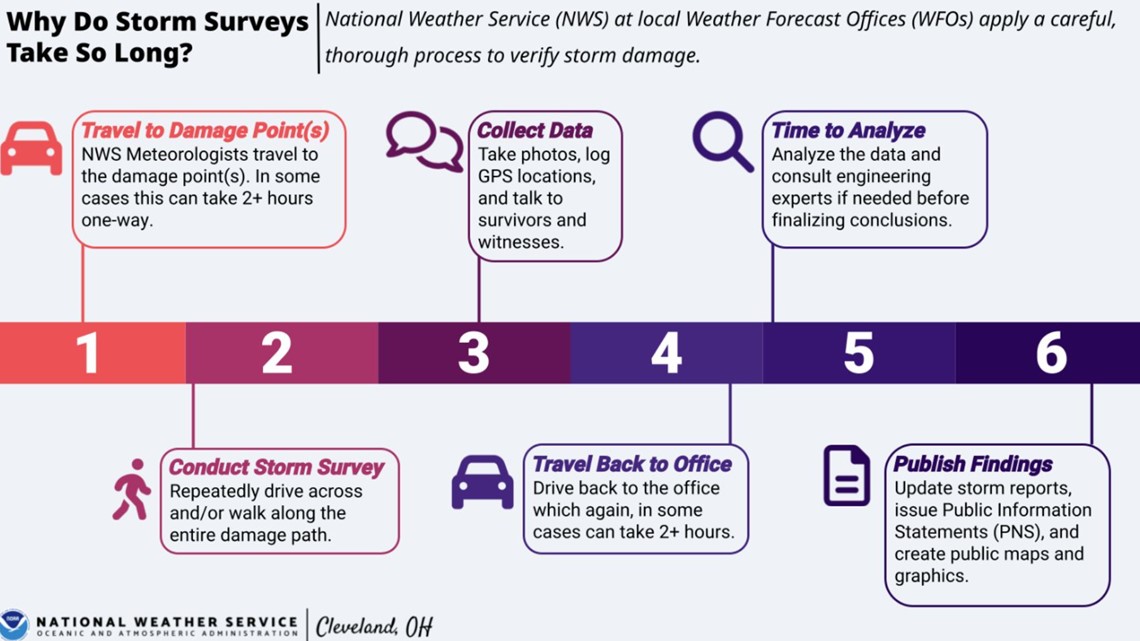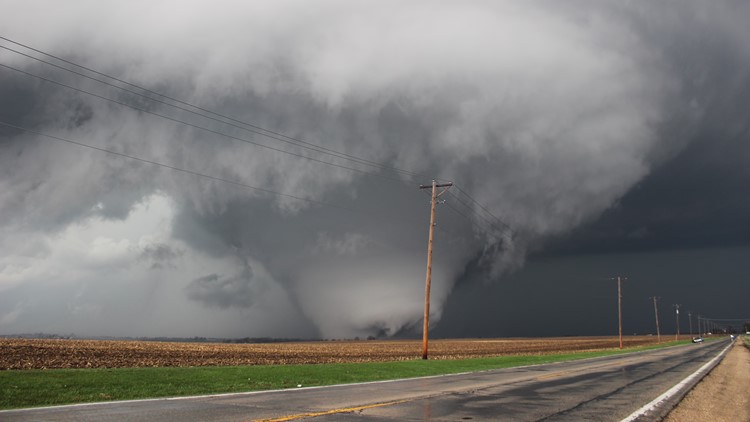CLEVELAND — When a strong or severe storm hits a neighborhood and leaves behind a trail of destruction, residents often wonder if a tornado touched down.
Whenever the National Weather Service (NWS) believes a tornado may have occurred, meteorologists assess the damage to make a final determination.
Below is an explainer on how the NWS team conducts storm surveys in order to determine if a tornado touched down.
When surveying storm damage, the National Weather Service uses a six-step process to verify storm damage. The extensive process, which can be viewed below, can take some time, according to NWS.
- Travel to damage point(s)
- Conduct storm survey
- Collect data
- Travel back to office
- Time to analyze
- Publish findings
After completing the storm surveys, NWS will have key indicators that help them determine if a tornado did touch down.


Below is how NWS determines a tornado:
- The pattern of damage determines if it was a tornado. NOT how much damage was caused.
- Tornado damage often has a chaotic appearance, with larger uprooted trees often crossing each other.
- We often look at larger uproots of trees to get a true idea of where the wind was blowing from. Smaller branches/snapped trees are not as helpful, as they may fail based on the tree itself and now where the wind was coming from.
- Large uprooted trees in a convergent pattern, crossing each other.
- Especially in our area, tornadoes AND microbursts can cause the same amount of damage.
"We conduct surveys to find out exactly what happened. This helps us to improve our warnings for the future. This is also important for historical reference," says NWS.
After a tornado has been determined, the NWS uses the enhanced Fujita scale to determine its strength. The scale is used to assign a tornado "rating" based on estimated wind speeds and related damage.
For context, here is how the Enhanced Fujita Scale classifies tornadoes:
- EF-0: Weak......65 to 85 mph
- EF-1: Weak......86 to 110 mph
- EF-2: Strong....111 to 135 mph
- EF-3: Strong....136 to 165 mph
- EF-4: Violent...166 to 200 mph
- EF-5: Violent...>200 mph



